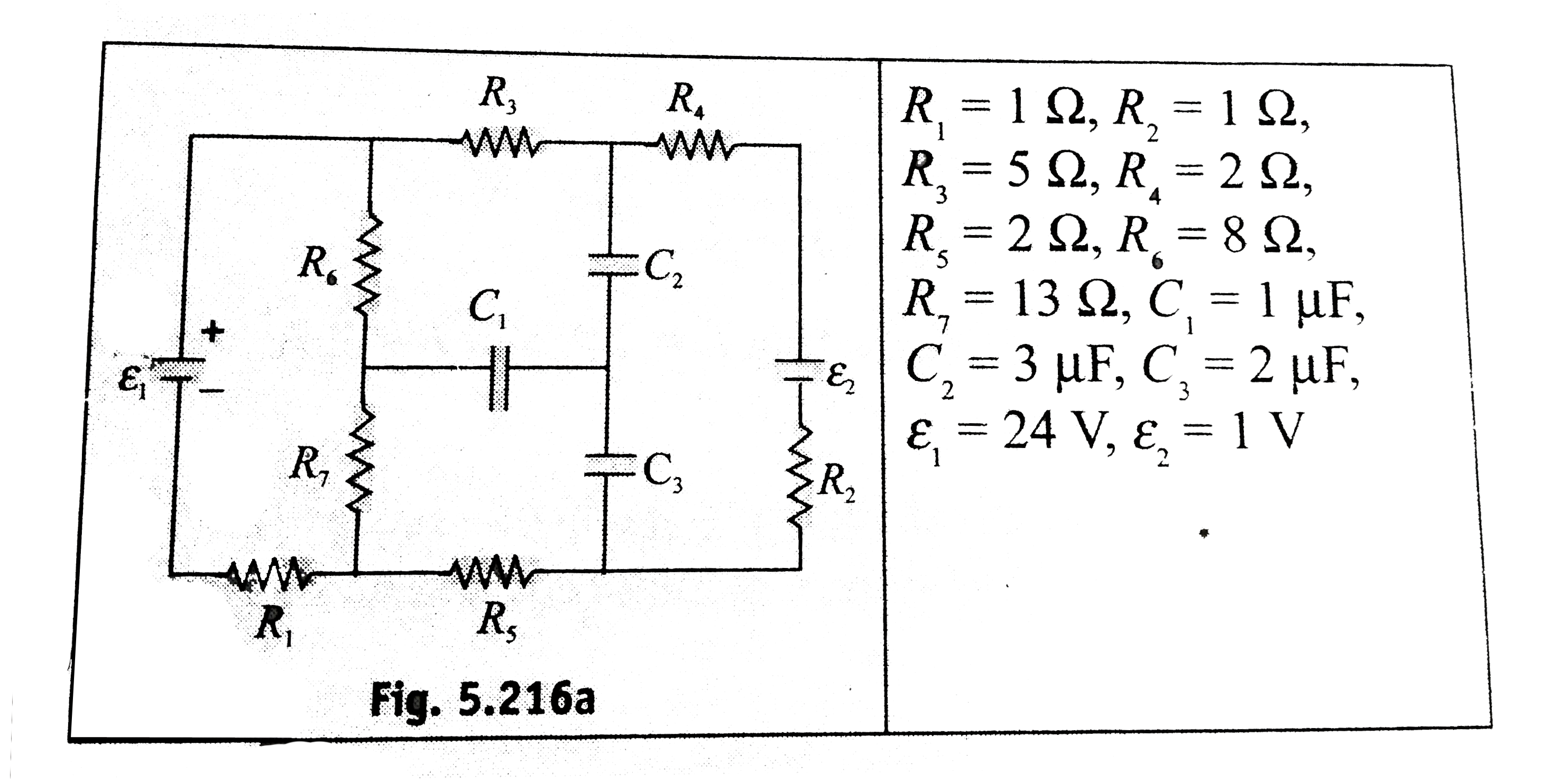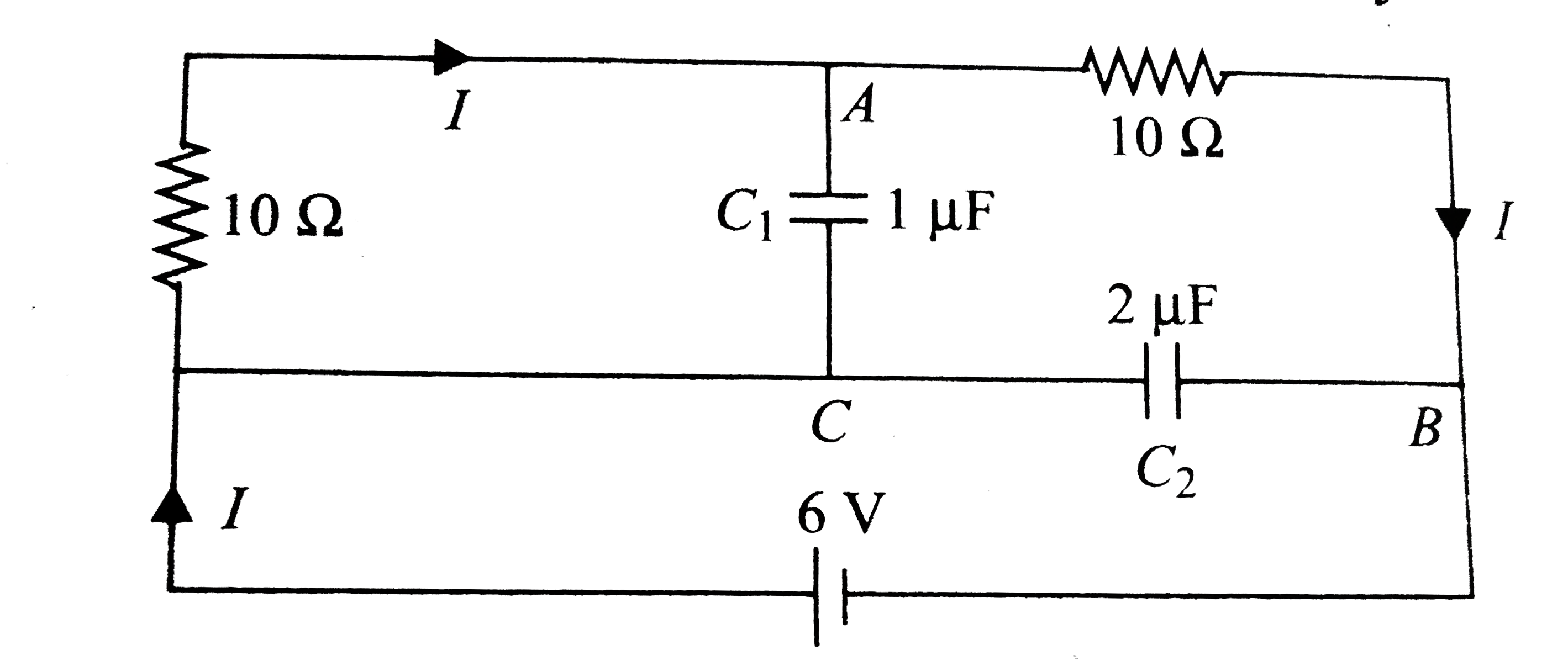Three charges in an isolated system have initial charges of +2 C, -3 C and +4 C. After some interaction their final charges become -5 C, +1C and X C respectively. Find X.
To find the value of X in the given problem, we will use the principle of conservation of charge. This principle states that the total charge in an isolated system remains constant, meaning the sum of the initial charges must equal the sum of the final charges.
1. Identify the Initial Charges:
- The initial charges are:
- Charge 1: +2C
- Charge 2: −3C
- Charge 3: +4C
2. Calculate the Total Initial Charge:
Qinitial=+2+(−3)++4
Qinitial=2−3+4=3C
3. Identify the Final Charges:
- The final charges are:
- Charge 1: −5C
- Charge 2: +1C
- Charge 3: XC
4. Set Up the Equation for Final Charges:
According to the conservation of charge:
Qinitial=Qfinal
Therefore:
3=−5+1+X
5. Simplify the Equation:
Combine the known final charges:
3=−5+1+X
3=−4+X
6. Solve for X:
Add 4 to both sides:
3+4=X
X=7C
Final Answer:
The value of X is 7C.
- The initial charges are:
- Charge 1: +2C
- Charge 2: −3C
- Charge 3: +4C
Qinitial=+2+(−3)++4
Qinitial=2−3+4=3C
- The final charges are:
- Charge 1: −5C
- Charge 2: +1C
- Charge 3: XC
According to the conservation of charge:
Qinitial=Qfinal
Therefore:
3=−5+1+X
Combine the known final charges:
3=−5+1+X
3=−4+X
Add 4 to both sides:
3+4=X
X=7C
The value of X is 7C.
Topper's Solved these Questions
- BOOK - CENGAGE PHYSICSCHAPTER - STATIC ELECTRICITYEXERCISE - CONSOLIDATED EXERCISE4videos
STATIC ELECTRICITY
- BOOK - CENGAGE PHYSICSCHAPTER - STATIC ELECTRICITYEXERCISE - CONSOLIDATED EXERCISE (Multiple Choice Questions with One or More Than One Correct Answer5videos
STATIC ELECTRICITY
- BOOK - CENGAGE PHYSICSCHAPTER - STATIC ELECTRICITYEXERCISE - MANDATORY EXERCISE (Exercise Set I) Multiple Choice Questions with One Correct Answer13videos
STATIC ELECTRICITY
- BOOK - CENGAGE PHYSICSCHAPTER - SOURCES OF ELECTRIC CURRENTEXERCISE - OLYMPIAD AND NTSE LEVEL EXERCISES10videos
SOURCES OF ELECTRIC CURRENT
- BOOK - CENGAGE PHYSICSCHAPTER - TRANSFER OF HEATEXERCISE - OLYMPIAD AND NTSE LEVEL EXERCISES10videos
TRANSFER OF HEAT
Similar Questions
Knowledge Check
- Question 1 - Select One
For the circuit shown in figure the charges on three capacitors, A, B and C are respectively
 A96μC,96μC,and48μCB32μC,64μC,and48μCC64μC,32μC,and48μCD32μC,32μC,and48μC
A96μC,96μC,and48μCB32μC,64μC,and48μCC64μC,32μC,and48μCD32μC,32μC,and48μC - Question 2 - Select One
The charges of 1 C an 5 C are placed at some distance in air. The ratio of the forces acting on them is
A1:25B1:5C1:1D5:1 - Question 3 - Select One
Two metallic spheres of radii 1 cm and 3 cm are given charges of −1×10−2C and 5×10−2C , respectively . If these are connected by a conducting wire , the final charge on the bigger sphere is
A2×10−2CB3×10−2CC4×10−2CD1×10−2C
Find the number of excess electrons in a body having charge of -5 C.
View SolutionIf an object made of substance A is rubbed with an object made of substance B, then A becomes positively charged and B becomes negatively charged. If however, an object made of substance C, then A becomes negatively charged, What will happen if an object made of substance B is rubbed against an object made of substance C?
(a) B becomes positively charged and C becomes positively
(b) B becomes positively charged and C becomes negatively charged.
(c ) B becones negatively charged and C becomes positively charged.
(d) B becomes negatively charged and C becomes negatively charged.View SolutionAnalyze the circuit find the charge in capactiors C1C2, and C3 n steady state.
 View Solution
View SolutionTwo metallic spheres of radii 1 cm and 3 cm are given charges of −1×10−2C and 5×10−2C , respectively . If these are connected by a conducting wire , the final charge on the bigger sphere is
View SolutionThree metallic spheres A, B and C having radii are in ratio1:2:3. Charge on sphere A is 6 μC and sphere B and C are electrically neutral. If sphere A first contact with sphere B and then from C and ultimately contact from sphere B, then now charge on spheres A, B and C respectively will be-
View Solution


